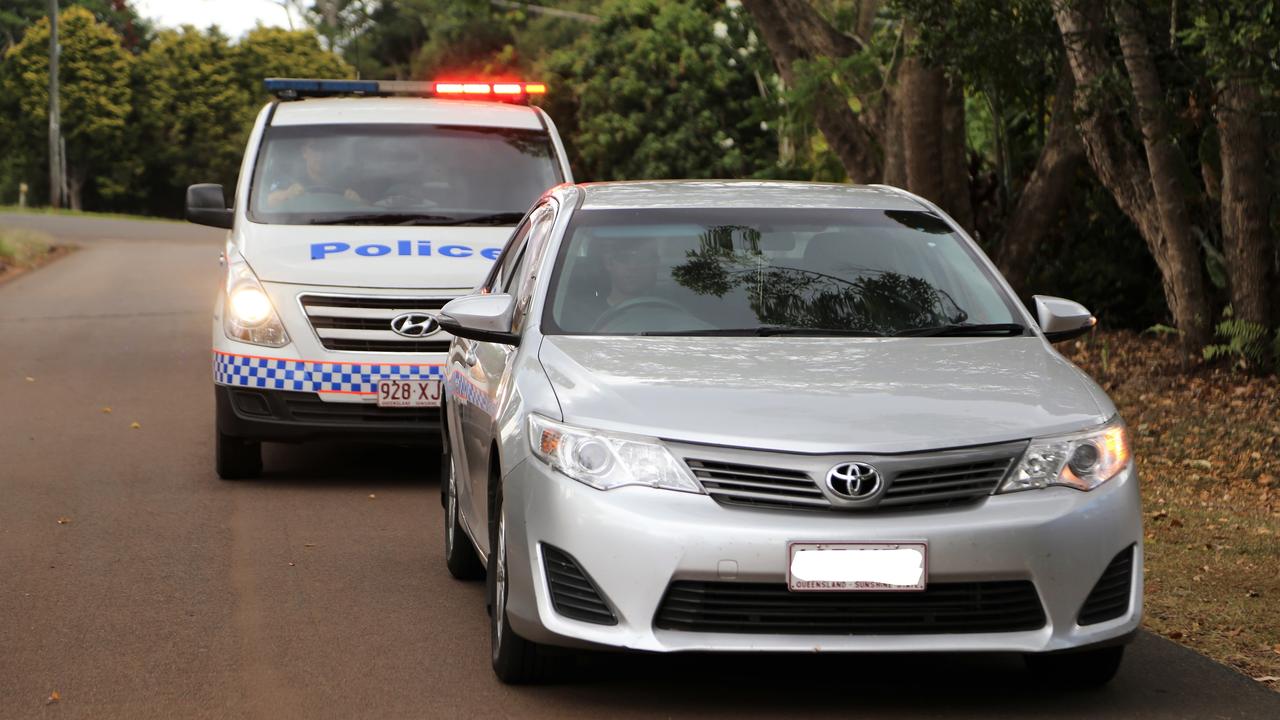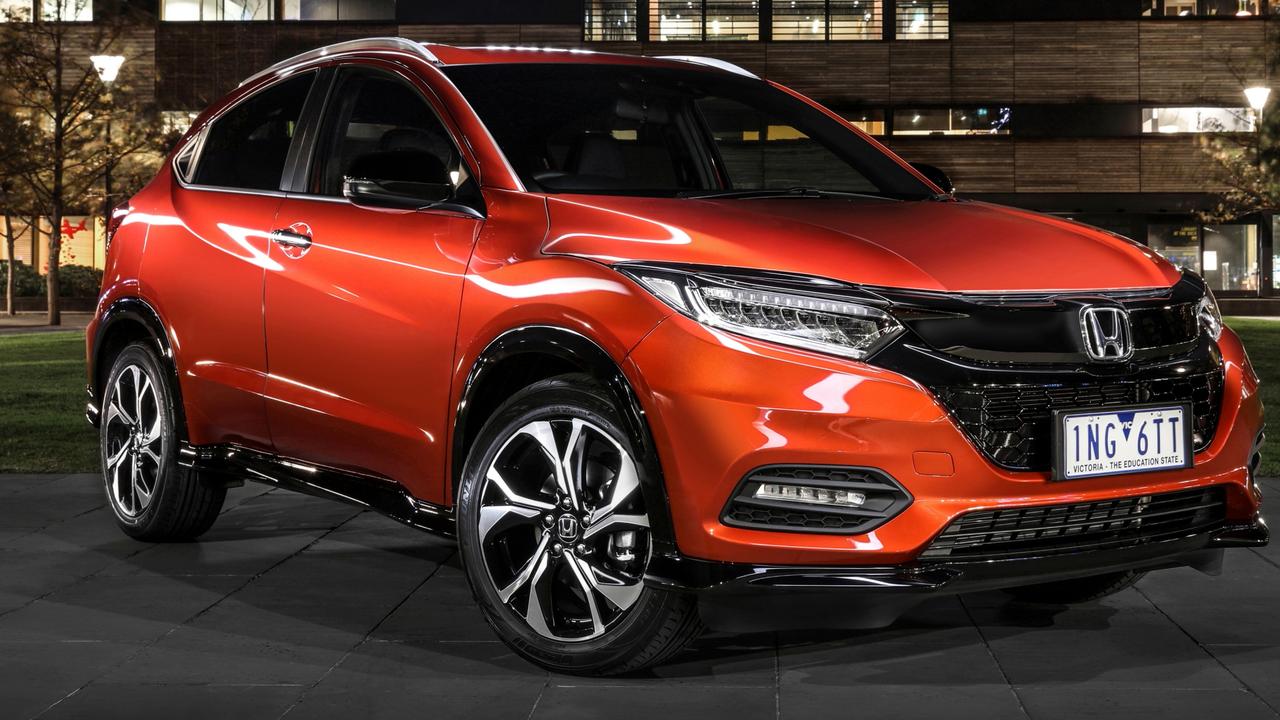Four-wheel drive comparison test: Ford Everest v Mitsubishi pajero Sport v Isuzu MU-X
Australians love their utes and SUVs, and these three ute-based vehicles combine the best of both worlds. But which is the best 4WD?
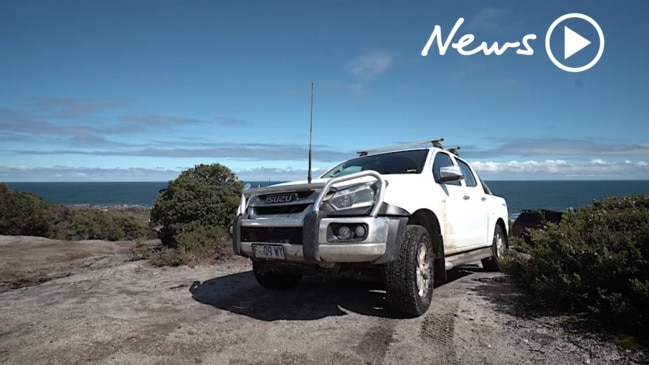
The idea of escaping has never been more tempting. Months stuck at home will do that.
The lowest fuel prices in two decades adds to the appeal of snapping up a new adventure machine.
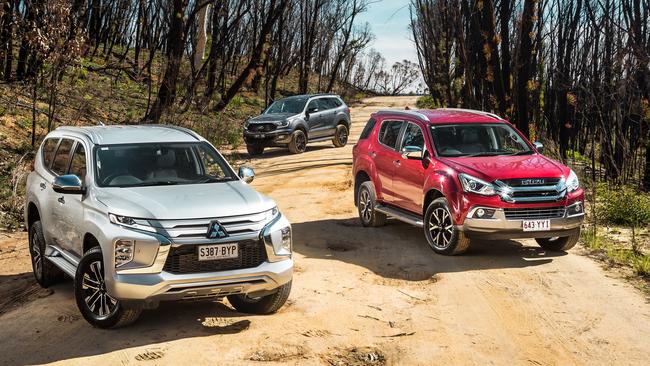
Off-roaders hovering around $60K hold particular appeal, providing sizeable family transport and the promise of venturing off into the yonder, no matter how rough it gets.
Here are three of the top-selling seven-seat off-roaders.
FORD EVEREST SPORT 2.0
It’s the closest thing Ford has had to a replacement for the much-loved Australian-made Territory but the Everest is very different.
Rather than dipping into the gene pool of a road-going sedan (Falcon) the Everest follows the class norm in drawing DNA from the Ranger ute.
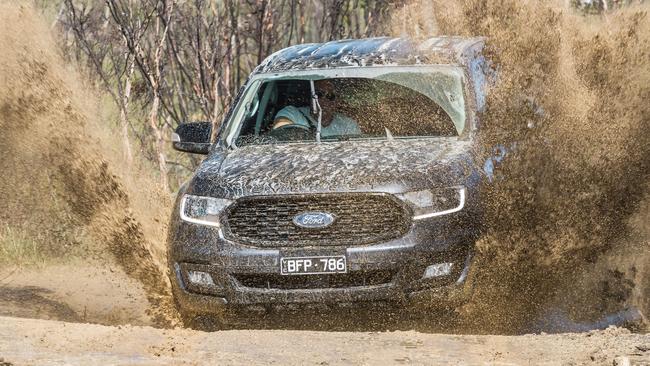
That means a ladder frame chassis for toughness.
It’s not as composed as the Territory in the suburbs, although it mounts a solid school run case.
Light steering is matched with accurate responses, helped by 20-inch tyres that have a relatively low profile. Grip levels are above average, too, and the Everest exhibits cornering competence few large off-roaders match.
On gravel tracks, local tuning produces beautiful control and it settles well after bumps.
Driving all four wheels constantly means no thinking about when you need more traction, either. As with its rivals, there are low-range gears for rock crawling and hills, part of a comprehensive off-road package that incorporates a locking rear differential.

Active noise cancelling dulls unwanted noises for a respectably calm cabin, one not flustered by bumps.
The 2.0-litre four-cylinder may be compact, but two turbos muscle things to 157kW and a class-leading 500Nm of torque. Matched to a 10-speed auto that shifts regularly but cleanly it makes for hearty progress.
The $65,490 Sport gets black exterior highlights as well as leather, active cruise control and an easy-to-operate 8.0-inch touchscreen with satnav and Apple CarPlay or Android Auto integration.
The Sport misses out on blind spot monitoring, but auto emergency braking (AEB) is part of a safety suite that ticks most boxes.
The Everest has some welcome surprises too. It’s the only one of our trio that accepts child seats in its back row.
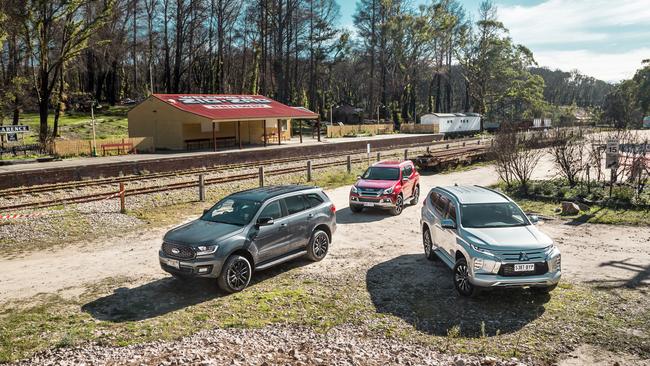
It’s also the only one to shut its engine down in traffic, no doubt helping with the impressive 7.0 litres per 100km fuel use claim, at least 11 per cent better than each rival.
There’s the occasional oversight; no reach adjustment to the steering, and — as with the others — no memory buttons to save his and hers seat positions.
ISUZU MU-X LS-T 4WD
As cars approach the twilight of their life the deals tend to sharpen. That explains the $54,990 price tag on the MU-X LS-T four-wheel drive.
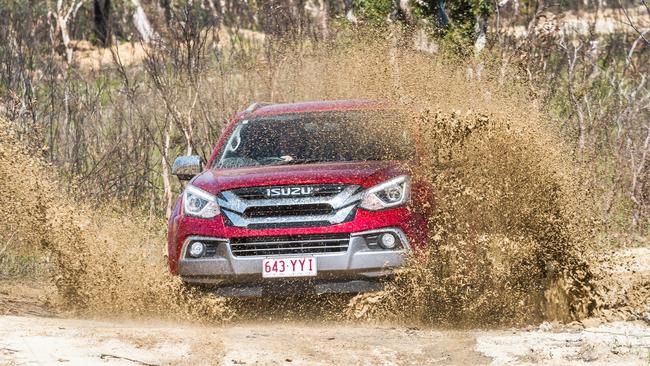
It undercuts many rivals, while bringing leather, satnav and an 8.0-inch touchscreen. It’s the only one here with a CD player and DVD screen in the rear, and the six-year warranty is a plus.
But there’s none of the active safety gear (including AEB) now common.
The MU-X also costs about twice as much to service than its rivals.
Dig deeper and it’s easy to see the cost savings. The front passenger will be manually adjusting their seat and there’s only single-zone ventilation. There’s no electric tailgate, no three-click indicators, no digital radio tuning and the only connectivity is Bluetooth. Finishes appear chosen for durability over aesthetics.
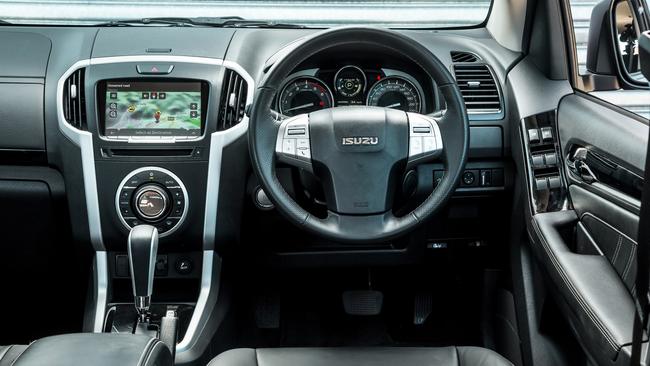
Expect much of that to be addressed with the new MU-X, to be based off the all-new D-Max ute that arrives within months.
The MU-X’s keep-it-simple approach continues beneath the skin.
There’s the same 3.0-litre four-cylinder turbo diesel and six-speed auto of the D-Max.
Proven, yes, but underwhelming. The 130kW power peak is only OK, although the 430Nm torque peak is stout and delivers on grunt, albeit with a clatter and grumble to let you know it’s working.
The MU-X is the only one that can’t be driven on-road in four-wheel drive, so you’ll have to manually switch as required.
There’s ample ground clearance and articulation for easy off-road progress, although the lack of a locking rear differential could leave wheels spinning in more challenging terrain.
It fends off big bumps reassuringly, though.
On-road is where the MU-X loses marks. Corners require an extra whirl of the wheel and the 18-inch tyres squeal easily, partly because it leans on its nose.
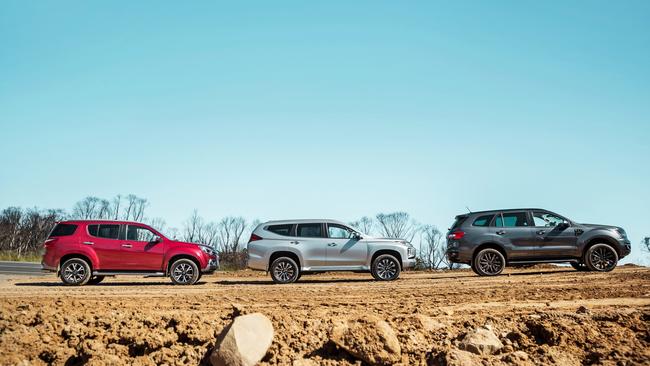
At least cabin storage is plentiful, from a dash-top covered binnacle to a second glovebox.
But there are no grab handles for the middle row and intrusive rear wheel arches make accessing the rear trickier.
MITSUBISHI PAJERO SPORT EXCEED
Aesthetically, the Pajero Sport is adventurous, with lengthy tail lights and a squinty nose gleaming in chrome.
There’s no arguing the value, our top-line Exceed tempting at $59,990; a limited time seven-year warranty adds to the appeal.

Included are heating and power operation for both front seats, a 360-degree camera, radar cruise, dual-zone ventilation, satnav, Apple CarPlay-Android Auto and an 8.0-inch screen.
The Exceed also has a smartphone app for remote tailgate operation and checking fuel use.
There’s not much missing, although having phone calls focused on the left-front speaker is an annoying carry-over from overseas markets.
We could live without the “misacceleration mitigation system” that occasionally makes for a stutter on takeoff if there’s another car ahead.
The Sport has a cocooning car-like layout, interesting finishes and snazzy metal shift paddles if you’re not happy with leaving the gear changing to computers.
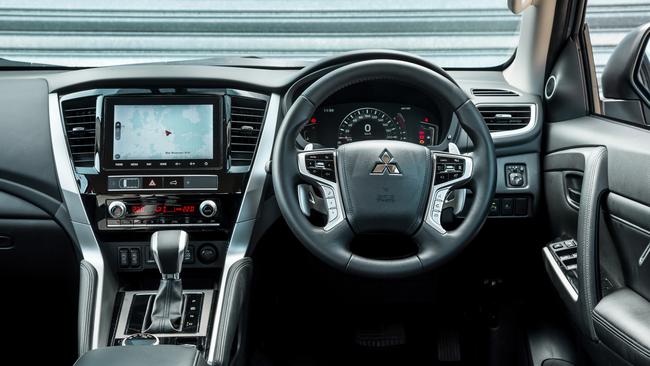
But there’s less metal. The Pajero is about 5cm narrower than its challengers, which makes for a narrower cabin, something that makes three bums across the middle row squishier.
At least there are some clever storage options, including flat-folding seats and slender ledges alongside the centre console.
The Triton’s 2.4-litre four-cylinder makes 133kW and 430Nm. While it only just outpunches the Isuzu, it’s more convincing courtesy of a lighter body and more ratios in its auto (eight in total).
The Sport’s engine is also eager and respectably smooth, albeit without the refinement of the Ford.
But claimed fuel use is thirstier than the rest, which is perplexing and disappointing.
Getting power to the road is a trick four-wheel drive system that includes a mode allowing on-road four-wheel drive.
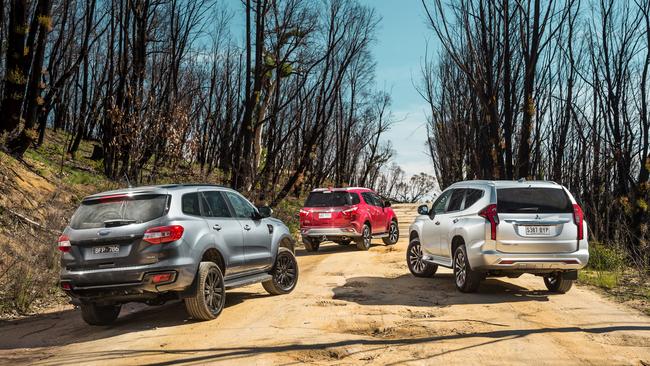
A locking rear differential and low-range gearing ensures competent rough-roading.
However, having left and right wheels marginally closer together makes for more left-right body movement.
It gets jittery over small bumps and leans noticeably when asked to change direction in a hurry.
VERDICT
Age has wearied the MU-X and its basic design is outclassed in 2020, despite an attractive price.
The Pajero Sport’s tempting combination of great value, a long equipment list and strong off-road ability make a compelling case.
But Ford’s Everest is the most convincing vehicle. Yes it comes with a price premium but it justifies that with a more modern engine and the best balance between on-road comfort and off-road ability.

FORD EVEREST SPORT VITALS
Price: $65,490 drive-away
Warranty/servicing: 5 yrs/unl’td km, $712 for 3 years
Safety: 5-star ANCAP (2015), auto emergency braking, driver alert, 7 airbags
Engine: 2.0-litre twin-turbo 4-cyl, 157kW/500Nm
Thirst: 7.0L/100km
Boot: 450/1050L (7/5 seat)
Tow capacity: 3100kg
Spre: Full-size
ISUZU MU-X LS-T 4WD VITALS
Price: $54,990 drive-away
Warranty/servicing: 6 years/150,000km, $1377 for 3 years
Safety: 5-start ANCAP (2013), 6 airbags
Engine: 3.0-litre 4-cyl turbo diesel, 130kW/430Nm
Thirst: 7.9L/100km
Boot: 235/878L (7/5 seat)
Tow capacity: 3000kg
Spare: Full-size
MITSUBISHI PAJERO SPORT EXCEED 4WD VITALS
Price: $59,990 drive-away
Warranty/servicing: 7 years/150,000km, $597 for 3 years
Safety: 5-star ANCAP (2015), auto emergency braking, blind-spot monitoring, misacceleration system, 7 airbags
Engine: 2.4-litre 4-cyl turbo diesel, 133kW/430Nm
Thirst: 8.0L/100km
Boot: 131/502L (7/5 seat)
Tow capacity: 3100kg
Spare: Full-size
Originally published as Four-wheel drive comparison test: Ford Everest v Mitsubishi pajero Sport v Isuzu MU-X

